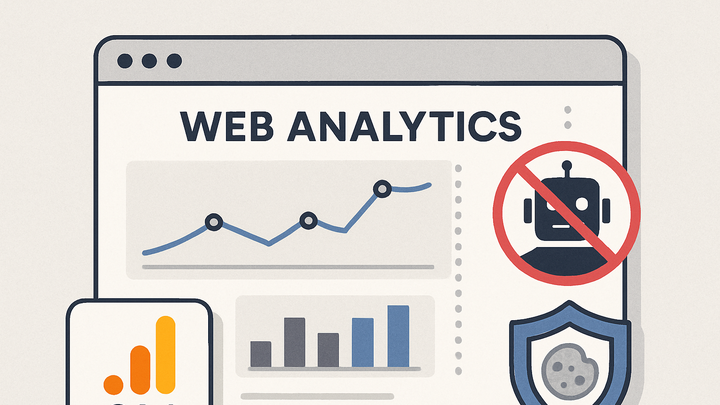Published on 2025-06-26T04:35:02Z
What is Fraud Prevention in Analytics? Examples with PlainSignal and GA4
Fraud prevention in analytics refers to the strategies and tools used to identify, filter, and block illegitimate or malicious traffic that can distort web metrics and skew insights. In digital analytics, fraudulent activity—such as bots, click spam, and automated scripts—can generate fake pageviews, clicks, signups, and other events, leading to incorrect conclusions about user behavior, marketing performance, and conversion rates. To address this, analytics platforms like GA4 provide built-in bot filtering and spam traffic exclusion settings, while privacy-focused tools like PlainSignal leverage a cookie-free tracking approach to reduce avenues for manipulation. By implementing robust fraud prevention measures, businesses ensure data integrity, maintain trust with stakeholders, and optimize resource allocation based on accurate metrics. Modern solutions combine real-time monitoring, anomaly detection, and customizable filters to stay ahead of evolving threats.
Fraud prevention
Methods and strategies to detect and block fraudulent traffic in web analytics for accurate data.
Why Fraud Prevention Matters
Fraudulent traffic can severely compromise the quality of analytics data, leading to misguided decisions and wasted marketing spend. Effective fraud prevention preserves the accuracy of KPIs, builds trust with stakeholders, and safeguards ROI by ensuring insights reflect real user behavior.
-
Protecting data accuracy
Ensures reported metrics reflect genuine user interactions, not automated or malicious activity.
-
Maintaining stakeholder trust
Accurate analytics build confidence among marketers, executives, and investors.
-
Optimizing marketing roi
Prevents wasted ad spend by filtering out clicks and impressions generated by bots or click farms.
Techniques for Fraud Prevention in Analytics
A variety of methods exist to identify and block invalid traffic at different stages of data collection and processing. Combining these techniques creates a multi-layered defense against evolving threats.
-
Bot and spider filtering
Most platforms maintain a known-bot list to automatically exclude common crawlers and scrapers from analytics reports.
-
Ip address exclusions
Blocking specific IP ranges prevents repeated visits from suspicious or high-risk sources.
-
Cookie-free tracking approaches
By avoiding reliance on cookies, tools like PlainSignal limit fingerprinting and reduce spoofing attacks.
-
PlainSignal implementation
<link rel="preconnect" href="//eu.plainsignal.com/" crossorigin /> <script defer data-do="yourwebsitedomain.com" data-id="0GQV1xmtzQQ" data-api="//eu.plainsignal.com" src="//cdn.plainsignal.com/plainsignal-min.js"></script> -
GA4 bot filtering
Google Analytics 4 offers a toggle under Admin > Data Streams > Configure Tag Settings > Show All > Bot Filtering to exclude known bots and spiders.
-
Implementing Fraud Prevention in GA4 and PlainSignal
Step-by-step guidance on setting up anti-fraud measures in both platforms to ensure continuous, automated protection against invalid traffic.
-
Configuring GA4 bot filtering
In GA4, navigate to Admin > Data Streams > Web > Settings, then enable bot and spam traffic exclusion to filter known automated agents.
-
Setting up PlainSignal filters
PlainSignal’s dashboard lets you define custom rules for IP blocking, geofencing, and user-agent filters without relying on cookies.
-
Monitoring and alerting
Establish real-time alerts for sudden traffic spikes or unusual behavior using GA4’s DebugView or PlainSignal’s live insights.
Best Practices and Ongoing Maintenance
Continuous evaluation and refinement of fraud prevention rules ensures long-term data integrity and resilience against new threats.
-
Regular audit of traffic sources
Review referral and source reports monthly to spot emerging anomalies and trends.
-
Update exclusion lists
Add newly identified suspicious IPs, user agents, or domains as they are discovered.
-
Integrate with security operations
Align analytics filters with broader cybersecurity policies for a unified defense strategy.
